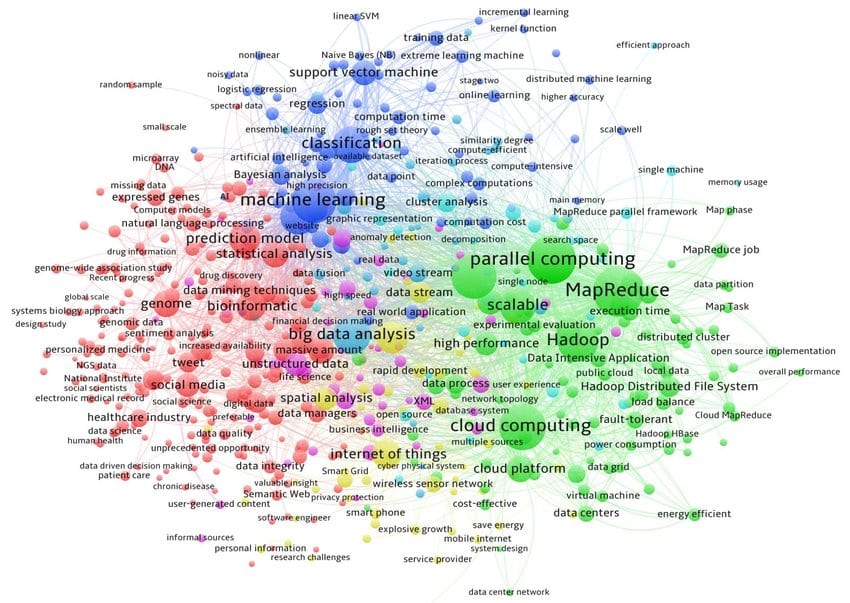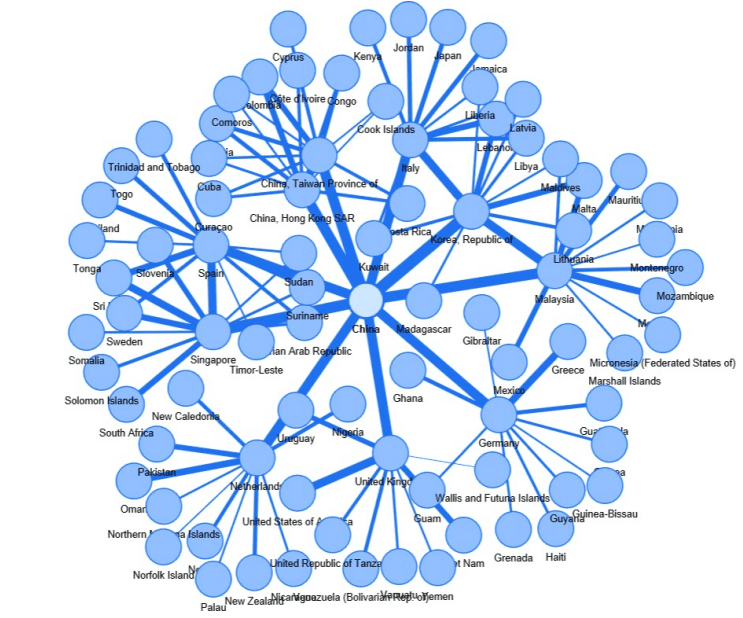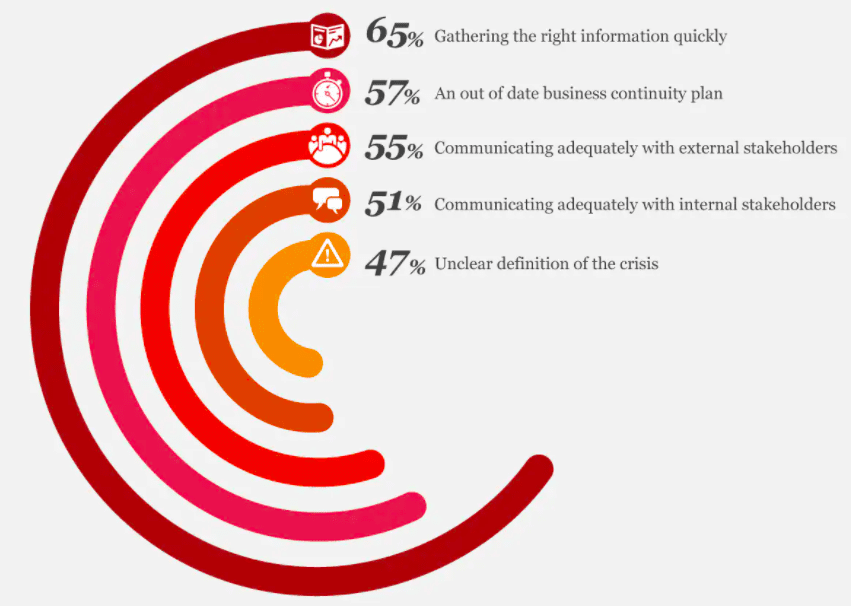How Big Data is Impacting Decisions in COVID-19
The Coronavirus is penetrating worldwide economies at a disturbing pace, constantly pushing officials to choose between lives and livelihoods. It doesn’t matter who we are or where we come from; the consequences have been grave for everyone.
But while the situation remains unsettling, new-age technologies such as Big Data and Artificial Intelligence are lying at the heart of the response. By churning massive amounts of epidemiological and scientific data, Big Data is enabling health officials, policymakers, and organizations to steer their efforts in the right direction. They are now equipped to detect traces of Coronavirus through computerized tomography scans and undertake intelligent contact tracing for positive results. High-end strategies also range from analytics-based cluster predictions to the development of effective drugs. Some highlights of such foundational efforts that are helping organizations make more informed decisions include:
- Johns Hopkins University developed a coronavirus dashboard that enabled the public to monitor the outbreak in real-time.
- A Hong Kong company called Insilico Medicine used Big Data and computational models to design six new molecules that can stop the virus from replicating.
- DeepMind, a project at Google, was used to predict the structure of proteins that make up the SARS-CoV-2 virus. And many more.
With such use cases of Big Data emerging as the leading arsenal of weapons in the fight against the virus, an interesting notion beckons –
Can Big Data provide similar respite to the ailing global corporate landscape?
As staunch tech enthusiasts would fathom, the answer is nothing close to being modest.
According to a recent survey, 43% of the respondents (comprising analytics professionals) stated that Big Data and Analytics remained as the primary strategies that are helping organizations drive informed decisions.

But given that no business could have ever been equipped enough to combat the pace of the spread, such a strategic shift has been more reactive than proactive. Other than manufacturing, IT companies (interestingly) have also been among the first casualties. Global IT spends are expected to drop by 3-4% this year alone. Even in the best scenario, this equates to $112.11 million. And if the pandemic rages further, this estimate is only set to become gloomier.
Why is this trend worrying? Primarily because of multiple interdependent virtual supply chains. Technological dependencies have given rise to an intricate mesh of digital infrastructures, with every pillar being supported by the other. Case in point, a simple search for the ‘correlation map of Big Data’ returns this:

One can search the same for any new-age technology. Any abrupt reduction in even the smallest of clusters on this map can have serious cascading effects across the entire tech canvas. To sum it up, if enough tech companies struggle to remain afloat, dire consequences become a probability.
Verdict: Both tech and non-tech organizations are facing uncertain risks.
What Big Data Trends are Suggesting in These Times
KPMG recently released a detailed report on how the pandemic is set to drive new trends on a global scale. Many other reports also corroborate these claims. Major trends that have come forth after churning heaps of data include:
- The risk of a global recession in 2020 remains alarmingly high due to economic shutdowns and changing work landscapes.
- While a manufacturing-driven recession was already underway, the effects have now seeped into the services sector.
- Shipping routes are set to be significantly impacted since China remains at the center of the global network of shipping/transport linkages.

And if these economic impacts were not enough, Big Data trends for 2020 continue to be compelling. Big Data and Analytics is no longer just a competitive advantage. It is now an essential ingredient among survival essentials. Daniel Newman, CEO of Broadsuite Media Group, recently made a bold prediction that organizations that are not investing significantly in Big Data Analytics by the end of this year will no longer be in business in 2021. While this may seem too harsh of an attempt to drive the point home, his sentiments echo with the growing need for businesses to embrace digital transformation in the wake of this pandemic. This is expected to be complemented by a steady increase in the market of customer journey analytics and real-time speech analytics.
Real-time data analytics is also set to boom. This includes both public-service and revenue-facing organizations. For instance, an organization that constantly monitors and deals with natural disasters can leverage Big Data and AI to make more informed and accurate predictions.
Data-as-a-Service is another key trend that is expected to become more mainstream, primarily because 90% of the organizations have been successful in generating revenues from it. This can be mainly attributed to a no-nonsense business model where the only prerequisite is for your data to mean something to the buyers.
Importance of Businesses To Be Data-oriented After COVID-19
Back in 2017, PwC published a survey as a part of the CEO Pulse report, where it asked CEOs about their worst fears during a crisis. Interestingly, 65% of them opined that they feel the most vulnerable in such times when they have to quickly gather the right information.

Fast forward to 2020, and this holds more substance than ever before.
Being data-driven in a post-apocalyptic COVID era is akin to sourcing weapons in the middle of a world war. It leads to fundamental shifts in both economic and strategic activities, resulting in the formation of three organizational pillars in the long-term:
- Elimination of subjective judgment in the decision-making process. Business questions can be easily answered with the help of extensive virtual experimentation and tests. This can be utilized as a basis for decision-making with the generation of reference points and appropriate context.
- Fostering a culture of data utilization and information sharing. In data-driven organizations, this eventually leads to an increase in the data literacy levels of all employees.
- Implementing data-driven processes and governance that span the entire organization and not just departments or projects. This involves the elimination of data silos and manual workflows.
If you are aiming to be a data-first organization after COVID-19, the efficiency with which you construct these pillars will directly dictate your success levels. But why should you do so in the first place? Here are some immediate and long-lasting impacts that sweeten the pot:
- Accurate Decision-making: Removal of confirmation bias, subjective reasoning, anecdotal thinking, and intuition means decisions are now purely data and experience-driven.
- Better Organizational Agility: With the right decisions, leaders can rest assured that organizational resources are being wisely invested. This includes finding the right people, building relevant infrastructures, and governing processes that generate crucial business insights.
- Improved Business Efficiency: Data dependency paves the way for opportunities to gain lasting efficiency and effectiveness. As a result, organizational processes constantly seek higher peaks.
- Reduced Process Costs: Undertaking processes such as elimination of invoice-processing errors and automating of service schedules can help organizations to cut their costs and optimize to the maximum possible levels.
- More Pricing Leverage: The ability to look at the entire finances of the organization at once, including historic, present, and future data points, translates to incredible capabilities. Leaders have a clearer picture of the financial and market health of the organization, helping drive better pricing strategies.
Considering the market uncertainties due to COVID, the effects of each of these benefits instantly become tenfold. This calls for Big Data to be included in the crisis response strategies of organizations. Not only will this help them go beyond current industry standards, but it will also make them better equipped to absorb such market shocks in the future.
Actionable Steps for Businesses to Leverage Big Data During COVID-19
Big Data and the accompanying Data Analytics can help proactive businesses to take control of the situation much better than their counterparts. Here is an actionable plan that you can use to turn the tide around and hop on the sustenance bandwagon:
1. Defining the Big Data Strategy: Before core business processes are aligned with Big Data, leaders need to define both short and long term strategies. This includes answering questions such as ‘What business functions are being disrupted by COVID?’ For instance, critical process obstructions that companies are facing include:
- Supply chain disruptions and immediate need for rerouting plans at scale.
- Screening out pandemic related customer behavior and mitigating its effects.
- Preparing for a possible recession by conducting simulations of past recession data.
Each of these is a contrasting scenario and involves the following actionable steps:
- Aligning the Big Data strategy with performance goals.
- Focusing more on measurable business outcomes.
- Transforming organizational capabilities via data-driven decision making.
2. Selecting Ideal Data Sets: With vast volumes of unstructured data sets being generated every minute, choosing the right data becomes a hassle. For instance, an e-Commerce company may want to predict future customer behavior. But utilizing digital behavioral data of customers may give significantly biased results if only the data of the lockdown period is leveraged.
For a robust data gathering methodology, consider collecting data in the following two phases:
- Ingestion: Includes gathering data from various sources such as CRM, point-of-sale, and call records. The data is then imported on a common platform.
- Transformation: Once both unstructured and structured data sets are acquired, it is aptly refined and organized so that analysts can implement the ideal data science tools.
3. Using the Right Tools: While Apache Hadoop is one of the most popular frameworks that can process heaps of unstructured data, other relevant options also exist. MongoDB, Cassandra, Apache Storm, and RapidMiner are each relevant for specific use-cases.
Once you have reverse engineered your business to the relevant Big Data tool, the next step is to marry it to supporting programming tools such as R, Python, SAS, and Tableau.
4. Defining an Analytical Process: It is now time to establish critical success factors with the help of advanced analytical models. If we go back to our previous example of predicting consumer behavior on the e-Commerce website during the pandemic, the business might be required to solve broader optimization problems that currently span functions and business units. To solve this, one needs to introduce new variables in the process. But paradoxically, this might increase the involved complexity.
An ideal analytical model strikes an intricate balance by filtering the data and using only the necessary variables.
5. Testing and Experimentation: Before you commit to the investment, put your hypothesis and use-cases to vigorous testing. By running test pilots, leaders can discover unexpected results and minimize the involved risks. Successful test runs can then be scaled into larger big data initiatives.
At this stage, they should have firm control over the entire data flow. This includes steps such as:
- Pre-positioning
- Integration
- Summarization
- Analytical Modeling
6. Utilizing Data Analytics in Decision-making: The last step of the process is to break free from the shackles of intuitions and directly incorporate Big Data into the decision-making process. This should be executed at a scale that you are able to model and forecast data in both reactive and proactive response strategies.
The New Normal
Organizations that are able to successfully embrace Big Data in these trying times will be able to:
- Actively answer even the most nagging and complex supply chain questions.
- Obtain deep insights into customer surveys, inquiries, and concerns related to the pandemic and its effects on business operations.
- Adding control variables related to the pandemic and the nature of the virus into marketing attribution models.
- Assessing the operational impact of the pandemic by analyzing events such as employee productivity and sick leaves at scale.
- Analyzing the financial implications of the pandemic, assessing risk factors, and undertaking critical decisions on investments.
- Looking at new channels, concepts, and methods to engage with both existing and prospective customers.
- Creating computational models at every possible business level, identifying various possible scenarios, and identifying the probability of occurrence of each.
- Identifying the major reasons and factors that can lead to customer churn and addressing each of them to save tumbling revenues.
Following this blueprint will be far from easy. But while you struggle through the finer details, remind yourself that most organizations are undergoing a similar (if not the exact same) transformation right now. With increasing adoption levels of Big Data, the long term growth potential of the technology looks far from reaching the pinnacle anytime soon.
The only question that now remains is: What would be the true cost of inaction for your organization? The right answer can open many new doors, while the wrong one can make you miss out on one of the biggest opportunities of the 21st century.
Other things you might be interested in: Graduate Together Commencement Speech
Recommended: Obama Graduation Speech









